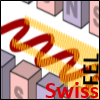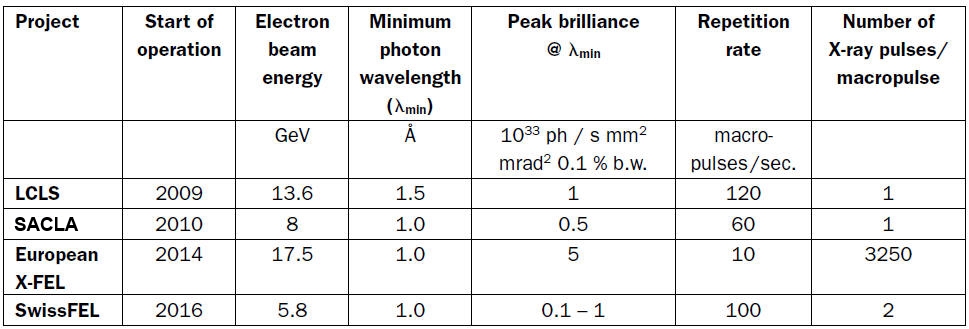Swiss free electron laser

In a free-electron laser (FEL), the accelerated electron beam is passed through a periodic magnet array, called undulator, causing transverse acceleration of the electrons which results in the release of photons. The SwissFEL project at Paul Scherrer Institute will develop a free-electron laser which provides a source of very bright and short X-ray pulses. The major control contributions are in the area of: RF system modeling and identification; repetitive robust control theory; repetitive learning algorithms; and distributed control and information architectures for high performance systems.
Introduction
A linear particle accelerator (Linac) is used to accelerate charged particles (electrons, protons or ions) in a straight line by generating a high frequency alternating electric field along a series of cavities, forming an accelerator structure. In a free-electron laser (FEL), the accelerated electron beam is passed through a periodic magnet array, called undulator, causing transverse acceleration of the electrons which results in the release of photons (see Figure 1 ). The external page SwissFEL project at the external page Paul Scherrer Institut will develop a free-electron laser which provides a source of very bright and short X-ray pulses enabling scientific discoveries in a wide range of disciplines, from fundamental research to applied science. The SwissFEL injector and linac RF drives operate in a pulsed mode at the rate of 100 Hz, using normal conducting RF accelerating structures. The input RF pulse length is relatively short (in the order of 1-3 us) and there is no RF feedback loop running within a pulse. Beam measurements can therefore only influence subsequent pulses.

Scientific Motivation
The SwissFEL X-ray free electron laser (FEL) will give the opportunity to take a deep look into matter in motion. Operating as a flash camera, it will take snapshots on extremely short length and time scales. The SwissFEL will help to understand and optimize processes of direct relevance to society, for example in clean energy production and pollution abatement, high-performance information technology, and the vital biochemical functions of living cells. The SwissFEL will be a discovery machine, enabling us to capture these processes for the first time, in action, and at the molecular level.
International context
The SwissFEL has a number of unique features which distinguish it from other X-ray FEL projects worldwide. The SwissFEL will deliver hard X-ray pulses, down to 1 A (= 0.1 nanometer) wavelength, as will only three other projects: LCLS (Stanford), SCSS (Harima, Japan) and the European X-FEL (Hamburg) (see Table 1). In comparison to the LCLS in Stanford and the European X-FEL in Hamburg, the SwissFEL will be more compact and cost-effective, thanks to a low electron beam emittance, low charge-per-pulse, compact undulators, and optimization of the FEL process. Whereas the European X-FEL will produce bursts of high repetition rate X-rays, the SwissFEL will be operated at a constant pulse rate.
